Selling with Body Language
Introduction
Knowing how to use and read body language in sales is an extremely valuable skill to have. It’s human nature for all of us to understand body language at some level – like when you see someone smiling, you would assume they are feeling something positive. However, this is not only based on their smile but also the energy behind that smile.
We’ve all seen that fake smile from a potential client, but once you really know how to read body language correctly and master the skill of reacting and re-engaging your prospect, you have a chance of flipping that no into a yes!
Here are just a few things to look out for when you’re with a client:
Where do their eyes keep looking?
If they’re constantly looking at the door, you may be in trouble as they’re likely ready to leave. A good response to this is to turn the conversation to them so they have a chance to talk and hopefully voice any concerns. If, however they’re looking at you – they’re engaged and you’re doing great!
What are their hands doing?
If you notice them playing with things like their pen or anything else they can find, they could be annoyed or maybe just bored. Try asking them a question so they can re-engage with the discussion.
If they’re tapping their fingers, then you might want to speed things up! This usually indicates they don’t have time to hear all the details and just want you to get to the point.
What are their feet doing?
If they’re feet are pointing away from you, they may not be interested in hearing you out, whereas if they’re pointing towards you, they should be open to listening to what you have to offer. Tapping of feet is usually the same indicator as the tapping of the fingers – they’re impatient.
With these few examples in mind, you should be questioning how your own body language is communicating with your client. Your physiology and emotions play a major role in putting across the way you feel about what you are selling.
If you trust your product or service, on an unconscious level you are more likely to be confident, smile, sit or stand tall, and exude positivity.
Here are a few tips on how to consciously improve your own body language:
Stand or sit comfortably.
If you’re comfortable, it’s more likely that your client will be also. No feet on desks or hands in pockets though – stand or sit professionally, but naturally.
Use your hands.
Talking with your hands can help get your point across and is a natural way of communicating – we’re not talking waving them around like one of those roadside arm waving air dancers, just some simple hand gestures are fine! Also, showing your palms occasionally while speaking shows openness and honesty.
Maintain eye contact.
A certain level of eye contact builds trust and will hopefully lead to making that sale. Avoiding eye contact may give off that you have something to hide, whereas too much could become awfully uncomfortable. Around 60-70% is usually the sweet spot. Perhaps try to imagine that you’re speaking to a friend to make it a little easier.
These are just a few simple ways to start focusing on how you can use your own and read other people’s body language in sales. This doesn’t even scratch the surface and it’s difficult to really learn any of it through written words. Role play and visual displays are essential in mastering these skills.
Raimond has over 20 years of experience using and studying body language techniques, which has made him an expert in this field. If you believe that you and your sales team can benefit from learning these skills (among others), in order to understand your clients on another level, get in touch!
Get in touch today to find out more about our services.

